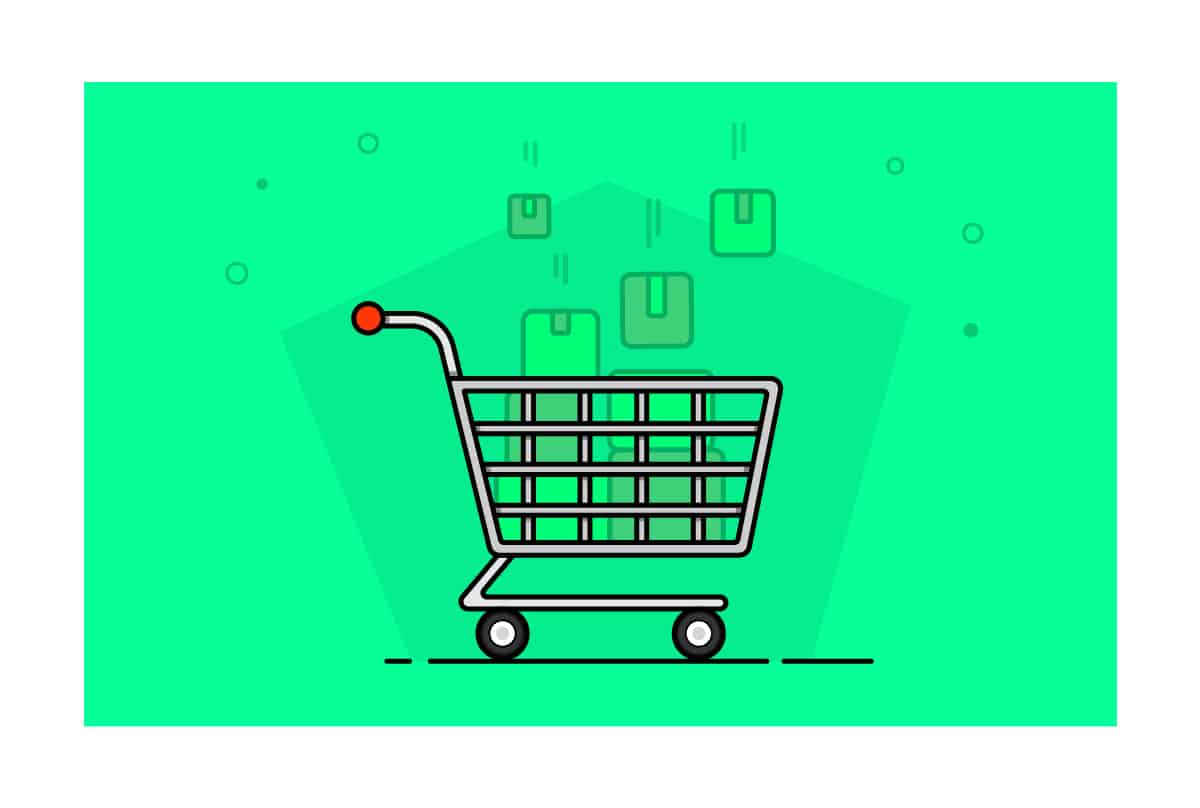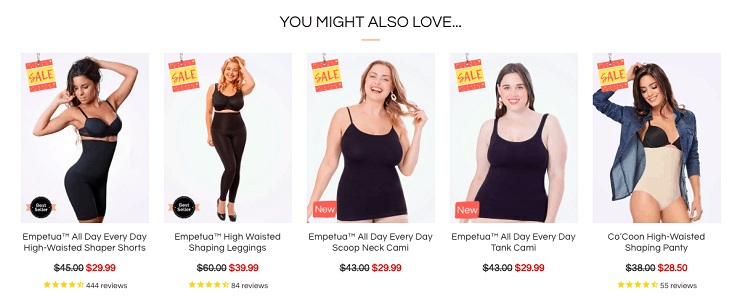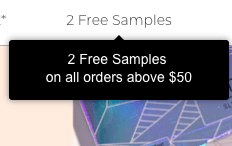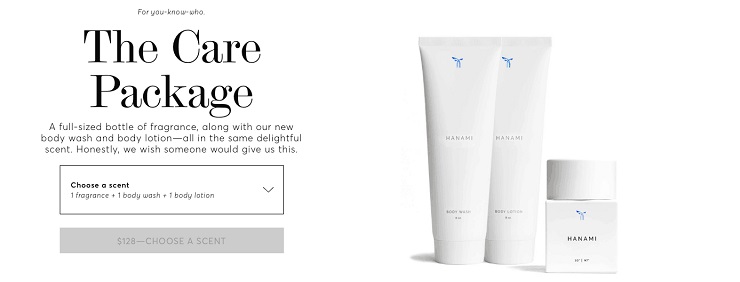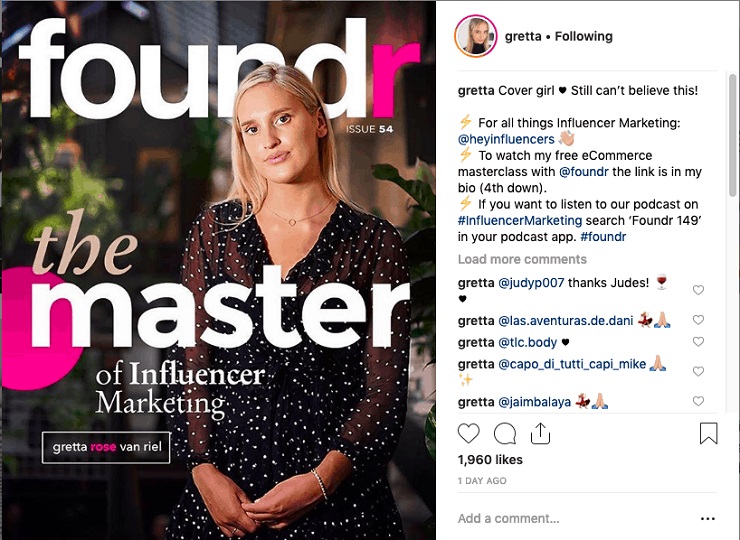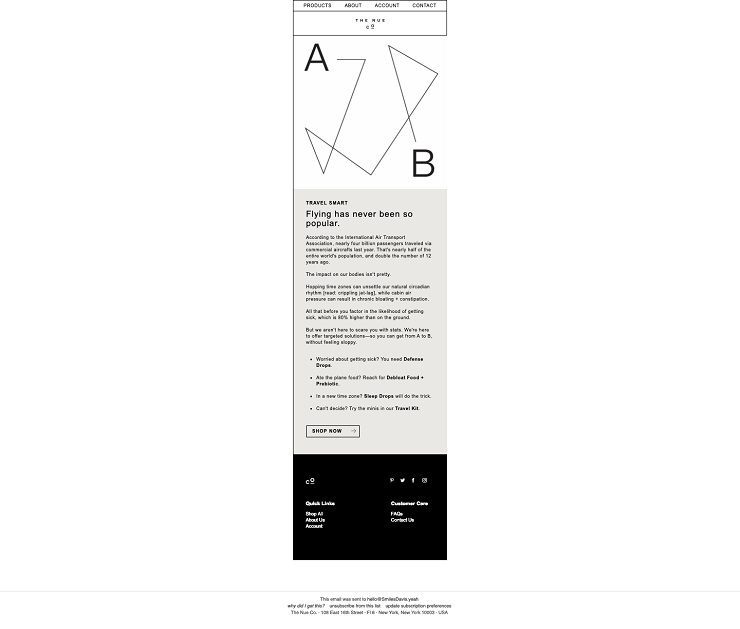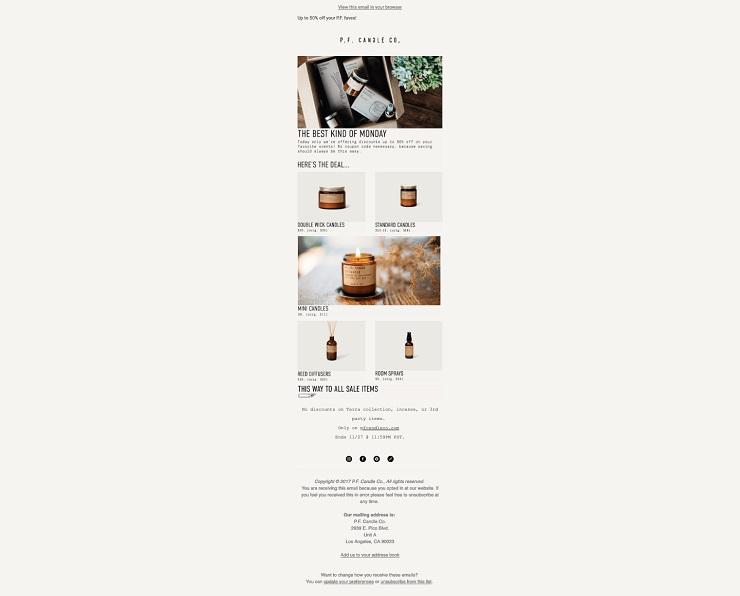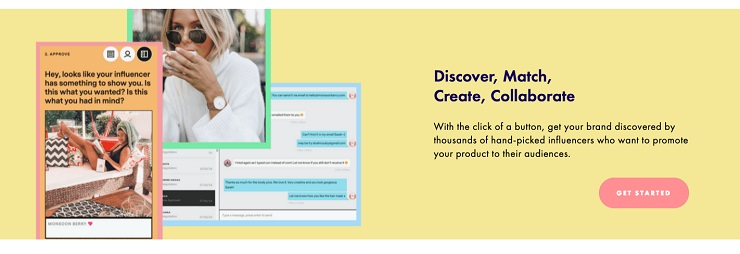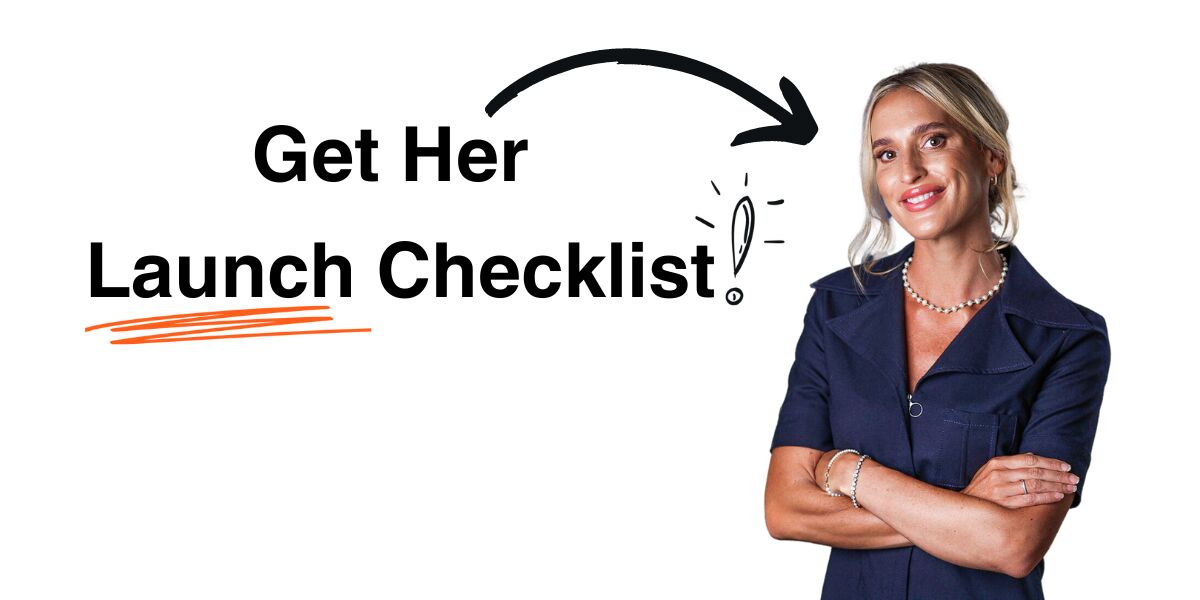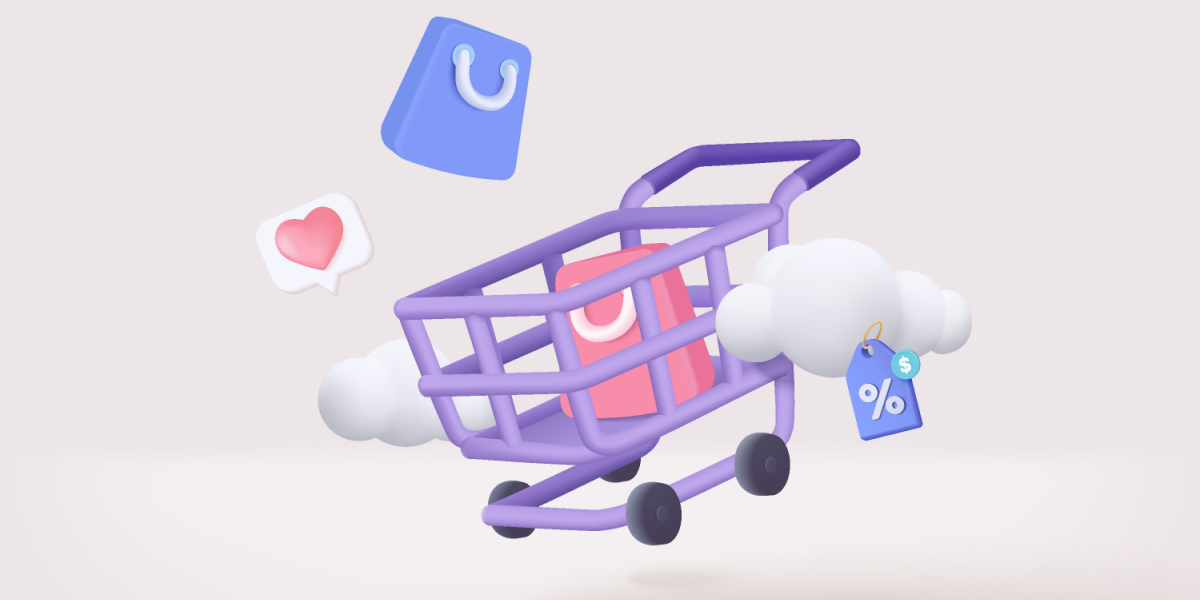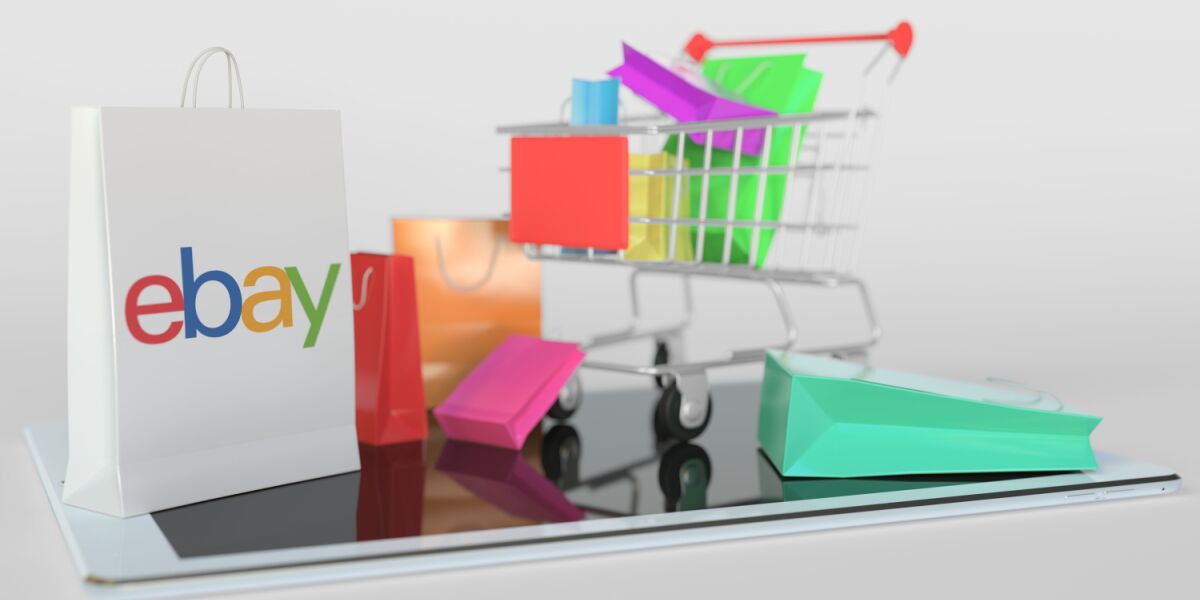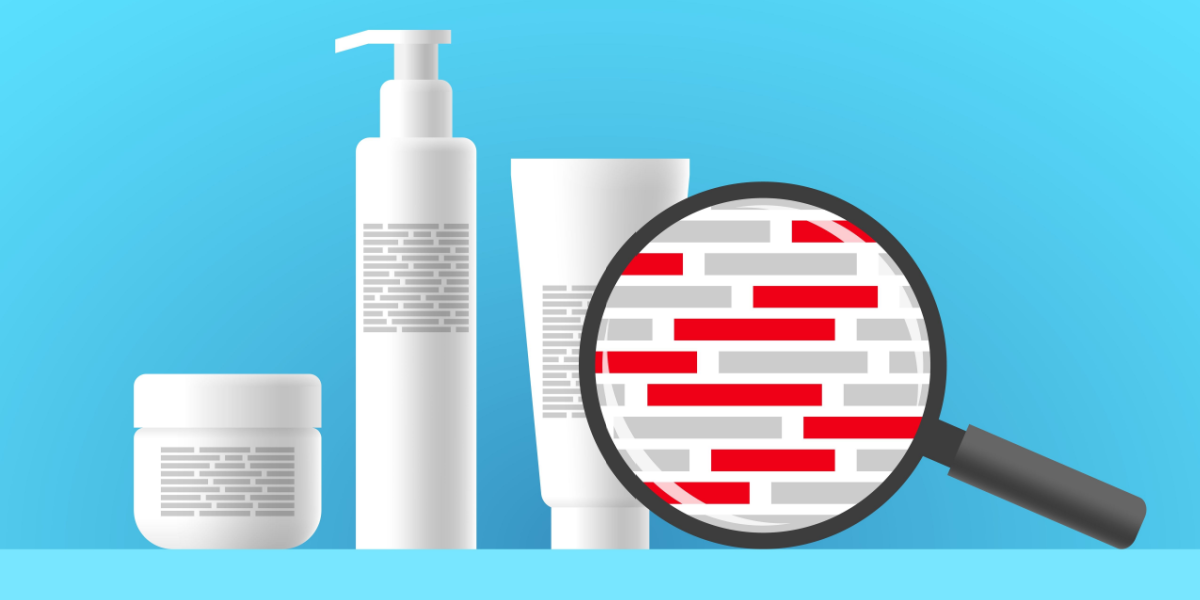If you’re running an fledgling ecommerce biz, you’re probably close to where Gretta van Riel was back in 2012: stuck in the 9-to-5 grind, daydreaming of breaking free from the shackles of an unfulfilling career and finally calling the shots as an entrepreneur.
Alright dreamer, time to wake up and smell the sales receipts. If your store’s ecommerce sales are trickling in, but your revenue isn’t growing, that daydream will never turn into reality.
But with smart marketing tactics and a heckuva lot of dedication, this time next year, you might just get to where Gretta van Riel is now—an ecommerce millionaire, breaking new ground on her sixth startup in six years.
We’re very proud to have Gretta as the instructor of Foundr’s hit ecommerce course, Start & Scale. And a fine course it is, but you don’t necessarily have to enroll to learn from her success. Today, for example, we’ve got a fantastic instructional video from Gretta to share with you, outlining some of the exact steps and tools she uses to dominate in ecommerce.
Then, we took it a few steps further, reaching out to other top minds in ecommerce to get their own insights on the principles Gretta relies on. The result a jam-packed tutorial on building your ecommerce sales, based on Gretta’s incredible successes, and bolstered by the wisdom of other leaders in the field.
This all may sound like the start of a sales pitch. “You too can earn millions! All you have to do is pay $2,000 a day in Facebook ads…”
But before you throw some cynical shade, know this: Gretta grew her first brand, SkinnyMe Tea, from $0 to $600,000 USD in monthly revenue in under six months, without investing a penny into advertising.
That’s because she literally had no pennies to spend.
“We scaled from nothing at the very start,” Gretta says. “I started SkinnyMe Tea with $23 in my bank account, so I didn’t put in much money to the company basically, only for web hosting, I think.”
Her success wasn’t a fluke, either. Since SkinnyMe Tea’s stellar start seven years ago, Gretta has co-founded four other multimillion-dollar ecommerce brands and is now applying her business savvy to launching a new SaaS product.
The secret behind Gretta’s success isn’t some magical formula guarded by the ancients, revealed only to those deemed worthy of vast riches. Sorry to bore you, but Gretta’s business growth tactics are common-sense approaches she learned from other marketers. (I know…snore, right?)
“I didn’t have any background in business, but then luckily through some opportunities that came about from SkinnyMe Tea, to begin with, I was able to gain a lot more business insight. I’ve had some incredible mentors,” Gretta says.
That includes mentors like Daymond John, Tim Ferriss and Eric Ries of The Lean Startup, who Gretta met when she won the Shopify Build-a-Business contest, and whose advice you can find in the Foundr blog, magazine, and podcast archives.
With this guide, and these other resources at your disposal, you’ve got the advantage of knowledge, something that even Gretta didn’t have at first. To get things started, check out Gretta’s latest video, where she outlines how to get more ecommerce sales, based on her own experience.
Here are the best ways to get more sales organically, without using paid advertising, as outlined by an ecommerce veteran.
1. Increasing your Average Order Value (AOV)
“Your store’s average order value (AOV) is the average amount of money each customer ends up spending per transaction,” Gretta says. “So you need to persuade your customer to buy more with each order.”
Why is increasing the AOV the first tactic we recommend? Because it’s the one selling technique that happens at the moment of purchase, when your customer is already in the mindset of buying.
Digital marketing strategist Josh Gallant backs this up, telling Foundr that increasing AOV is one of the most efficient ways to see growth: “If someone is willing to buy one thing, your chances of getting them to buy something else at the same time are MUCH higher than trying to bring in a brand new customer.”
Gretta says the most common ways to increase your AOV are upselling and cross-selling. These terms are often confused, so let’s take a look at what each approach does and how you can put them into action to increase your AOV, ASAP.
Cross-Selling
A cross-sell invites a customer to purchase items related to the product that they’re buying. You may have seen cross-selling techniques on ecommerce sites, whenever there’s a product recommendation to go with whichever item you’ve clicked on or added to your cart.
“Cross-selling works best when you’re showing similar products that ONE specific buyer will be interested in,” Josh Gallant says. “If you’re just blasting ‘most popular’ products, it won’t be as personalized and won’t convert as well. Use their (the customer’s) purchase history and site activity to better understand what they’re actually looking for.”
There are a few ways you can cross-sell tangible products:
Offer product-related accessories at checkout
“The best way to increase AOV for me has been to add product add-on checkboxes to the product page. Make it easy for people to add these products on when they add the original product to the cart,” recommends Christian Sculthorpc of Vaped.com
Gretta van Riel says one of her best sellers was a tea strainer she cross-sold with her loose leaf tea. By recommending such items at the moment of checkout, you’re not only increasing your AOV, you’re eliminating a problem for your customer so they won’t have to track down an essential item later.
Make product recommendations based on buying behavior
Cross-sells don’t have to be strictly related to the product. They could simply be product recommendations based on buying behavior. Think, “people who bought X also bought Y.”
“I’ve found that keeping it as relevant as possible works better,” Gretta says.
Holly Cardew, CEO of ecommerce photo editing app Pixc agrees.
“At the cart page or even on the product page include relevant items. Not just ‘you may also like’ or ‘so-and-so bought,’” says Holly. “Include items that actually go with the product and are useful to the product.”
Jordie Black, ecommerce content marketer at Copy and Check says that tracking your buyer behavior on your site and responding with recommendations creates personalized experiences for your customers.
“Instead of just showcasing products, try to create experiences,” Jordie says. “Think lifestyle-type content that shows potential customers what their life might be like with not only the product they’re interested in, but all the others too.”
Thanks to marketing automation software tools built for ecommerce, cross-selling has become a “set-it-and-forget it” source of sales. Your customer’s buying behavior can trigger an entire marketing sequence focused on cross-selling products through a variety of channels, from email to chatbots in Facebook Messenger.
“The best way we’ve found to cross sell our customers is to offer our customer more of the same, but with slight variations to it.” says Matthew Schmitt, Chief Content Officer of Smar7 Apps. “In print on-demand, this is super easy. If you sell a shirt to a dog owner, you follow up with that dog owner using ads/email/messaging and present them an additional dog owner shirt or similar product. Our best strategy is to time an additional offer right after purchase and right after delivery. These are two great opportunities when our customers are very happy.”
Upselling
While cross-selling focuses on offering different, but relevant items, an upsell offers a more expensive or upgraded version of the same product your customer is buying.
Here are some ways to employ upselling tactics for more revenue:
Upsell quantity for a discount
“If customers are interested in our 14-day detox, priced at $39, we try to sell them into our 28-day detox, which is $65, and promote the percentage discount that they received by purchasing,” Gretta says.
Offer an upgraded version of the product
“For example, if we had a certified organic version of our tea product that costs more, we might push the benefits of buying those,” says Gretta.
Fragrance seller Phlur has upselling down to an art. They sell sampler bottles of perfume for customers to test out, then they can order a larger bottle once they pick out the scent of their liking. To further incentivize the upgraded product, the cost of the sampler bottles is applied to the amount of the larger order.
Cross-selling and upselling aren’t the only ways to increase average order value. Here are some other methods recommended by our panel of ecommerce experts:
Discounts, Free Shipping, or Gifts with Minimum Order
“Offering free shipping is a smart method,” says David Hoos, director of marketing at ecommerce conversion optimization firm The Good. “It not only removes friction during checkout, but you can attach it to a specific order value so they are incentivized to reach a minimum to receive the benefits.”
Free samples or gifts for minimum orders are also a smart tactic, as they help create brand awareness for future purchases.
Applying a discount for orders over a certain dollar amount can also help you increase your customer’s total spend. Oftentimes, people will add low-dollar items to their carts just to qualify for a percentage off their entire order.
Bundle Products to Create Packages
Gift-buyers love it when sellers bundle related items into a package. Bundling is a popular method when you have multiple forms of one product, for example, a fragrance that you sell as a candle and body lotion as well as cologne.
You can also create starter kits that help your customers begin a pursuit that will lead to more purchases down the line. For example, organic cloth diaper company Smart Bottoms sells a starter package for new parents. If the starter pack gives parents what they need to successfully diaper their babies, no doubt they’ll be back to purchase more from Smart Bottoms as their babies grow.
Looking for the right package deal to offer? David Hoos advises that you use a data-driven approach: “Mine your purchase data and look at the items that have repeatedly been bought together,” he says. “Formalize those bonds by bundling them together.”
Subscriptions and Loyalty Programs
“Depending on the product, you may be able to create a subscription, where you automatically send the item to the customer on a recurring basis (every 4-8 weeks),” Holly Cardew says. “This works well for pet products, food, beauty products etc.”
Jordie Black says gamification is a great way to get your loyal customers engaged so they get rewarded with discounts on future orders.
“Customers gain points for sharing content, interacting with social channels, not just spending money,” Jordie says.
2. Abandoned Cart Recovery
Once you’ve exhausted the opportunities to increase your average order, you’re on track to being a millionaire, right?
Not so fast.
Getting people who are ready to purchase to spend a little more than they intended is low-hanging fruit. But did you know that over 69% of ecommerce stores have abandoned products in their carts right now?
That means there’s a huge portion of untapped sales waiting to be closed. The shoppers who abandon items are people who wanted to buy your product—wanted it enough that they added it to their cart, presumably with the intention of paying for it. But something, either an interruption or second thoughts, got in the way of ordering.
So it’s up to you to chase down that order and bring it home!
“When a potential customer provides their contact information but doesn’t complete their order, you can contact them to encourage them to complete that order,” Gretta says.
How you encourage them is up to you. Some ecommerce stores offer discount codes for returning. Some, like digital marketer Mark Hami, turn checking out into a game:
The standard is to offer a discount coupon. And it works well. But what we’ve done is taken a long-term look at it in order to push brand loyalty. A client was open enough to try this, and we’re glad they did, because it rocked our world. What we did is offer a discount coupon, but also give (the customer) a long-term vision with a progress bar saying, “You are 23% closer to spending $100 with us, at which point you get any $25 product for free!” And it worked wonders! We tested this with the regular coupon-related abandoned cart sequence and saw a recovery of 14%. But with the gamified abandoned cart sequence, we recovered a whopping 42.3%!
Game or no game, here’s a quick email sequence you can use to get stray customers to check out with their abandoned items:
Email 1: Five minutes after they leave product in cart
A quick reminder of what is in their cart with a note of urgency that the item will not stay in stock for long.
Email 2: Four hours after cart is abandoned
Another reminder, this time with a time-limited offer that will expire in 48 hours.
“Price and shipping cost are the two big roadblocks for MOST buyers who leave our site,” says Matthew Schmitt from ecommerce software company Smar7 Apps. “So we start eliminating those roadblocks during the email sequence, starting with free shipping and moving to bigger discounts on their order price.”
Email 3: 48 hours after
Notify the customer that their discount is expiring. You can also make recommendations for related items they might like instead if they’ve changed their mind.
Looking for more email inspiration? You’ll love ReallyGoodEmails.com: a growing swipe file of hundreds of good inbox finds from leading companies of all sorts.
3. A Strategic, Engaged Social Media Presence
When you focus on getting people to spend more with you and finish checking out, you’ll immediately see a boost in revenue. But once those folks have ordered their products, where are you going to find more customers?
That’s where social media comes in.
Gretta van Riel’s social following has been one of her most valuable assets in launching and scaling four multimillion dollar ecommerce startups over the last six years. She now has more than 16 million combined followers across five different Instagram accounts.
“Instagram has been my platform of choice, but others are also particularly powerful,” Gretta says. “It’s all going to depend on where your target audience spends their time.”
Here’s what Gretta (and other social media-savvy ecommerce marketers) have to say about building a following that takes you to the next level in business growth.
Define Who You Want to Follow You
Everything you post on social media should be targeted to that one ideal customer who will love your products and tell all their friends about you. So before you start posting, get to know that customer.
“There is no getting around knowing your audience and speaking directly to them,” says Matt Schmitt from Smar7 Apps. “I mean really knowing. A lot of young store owners I see try to speak to too many people and then don’t speak to any of them at all.”
If you’re still discovering who your ideal customer is, creating a buyer persona will help you in your research and act as a resource for your social media team as it grows.
Pick 1 or 2 Channels to Really Dominate
Like Matt said above, you can’t speak to everyone. You also can’t be everywhere. Once you discover where your ideal customer hangs out in the social-sphere, dig in deep and focus your content creation on that platform.
Here’s an at-a-glance overview of the biggest social media platforms and their primary demographics:
Grow Your Following Using the 3 Cs of Community
1. Content
Of all the revenue sources for ecommerce sales, content was by far the top of the list for everyone we talked with for this article.
What is content, you ask? It’s every piece of messaging that goes out to your prospects and customers, with the purpose of building an emotional connection with your brand. It can be a blog post, an email, a tweet, a picture on Instagram, a video, a podcast…the list goes on.
“The content you post is going to greatly determine the type of followers that you attract to your account,” Gretta says. “So you want your content to be both relevant and valuable to your target audience.”
No matter what form your content takes or what your content is about, it should spark some kind of emotion in your audience. “Create content that engages your users and they are likely to share with their friends and family,” says Holly Cardew of Pixc.
“Get good at content marketing, “ advises Christian Sculthorpc from Vaped. “Not only can it drive tons of visitors to your site, but it can help educate past customers on why they should purchase again”
Need some guidance on how to create content strategically so it reaches the right people? Check out this piece: Are You Doing Content Wrong? World-Class Content Marketing Experts Reveal How to Do it Right
2. Collaboration
Social media marketing is all about building relationships through content. When you collaborate with other brands in your industry or influencers your target audience follows, those relationships happen more quickly and at scale.
“Find accounts & companies in a similar place to your own, reach out via DM about a guest post style partnership, get your account in front of a brand new group of people that fit your target audience personas,” says Josh Gallant.
Gretta van Riel says giveaways are an easy and efficient way to collaborate.
“You’re able to mutually benefit from each other by growing each others social following,” she says. “Just put together a prize pack of your products and both push the give away through your social channel.”
Brands and influencers aren’t the only places to seek collaboration opportunities. Social media is a two-way conversation, and every interaction you have with your followers is a collaboration.
“Don’t just promote your products on social media,” advises freelance copywriter Karine Bengualid. “It isn’t only about sales. Build your community and encourage user-generated content, share and like when others’ tag you and engage them. They obviously like you so take advantage of these owned channels.”
One of the best methods to grow a following fast on Instagram using the power of community is a tag-to-win competition.
When The 5TH Watches was about to launch, Gretta partnered with an influencer and asked their followers to follow @the5th and tag a friend to be entered in a contest to win a prize. In the space of 24 hours, The 5TH grew its Instagram following by 20,000 followers.
To see Gretta’s exact strategy for using tag-to-win posts to grow your following, check out this post on the Hey Influencers blog: How To Hold A Tag To Win Giveaway On Instagram
3. Consistency
One of the most challenging aspects of social media marketing isn’t coming up with new ideas, but spending the time to post content at a consistent rate. But if you want to continue to attract new customers, it’s imperative that you stick to a publishing schedule.
“Posting consistently doesn’t only help to establish front of mind positioning for your brand through repetition,” Gretta says. “It’s also favored within the Instagram algorithm. In other words accounts that post consistently will receive more organic reach on their posts many Instagram will show their posts to more people.”
Does this mean you need to spend every spare minute posting to social media?
Not at all! In fact, depending on the platform, if you flood your profile with posts all day long, you might have less of a chance of reaching your desired audience. Using an automated tool like Buffer, you can schedule your curated content to publish at a consistent rate.
One more note on consistency: it’s not just about sticking to a schedule. It’s also about staying consistent with the identity you want your followers to associate with your brand. A brand guidelines document will help keep your brand voice consistent, no matter who is posting.
Want to achieve Instagram Mastery? Enroll in Foundr’s FREE Instagram Masterclass!
4. Connecting to Your Audience via Email
“Email marketing is still one of the most effective marketing strategies for online stores,” Gretta says. “As long as they’re quality subscribers, the more sales you’ll be able to make for your online store.”
So how can you grow your list while making sure the subscribers are genuinely interested in your offerings? It’s all about meaningful content.
“Don’t ignore the value of creating content,” says Josh Gallant at Foundation. “Provide value to your audience in the form of awesome written or video content and flip the relationship into one where you’re GIVING before ever asking for a dime.”
Are we sounding like a broken record yet? But seriously: Content is the lifeblood of growth for online businesses, so if there’s one thing worth investing time and money in, that’s the one.
There are two big ways to get folks to sign up for your list:
Offer a Discount
“The best way to go about doing this is by offering incentives on social media to sign up to your email database,” Gretta says. “These can be as simple as sign up to be notified when we launch, sign up to find out when a product’s back in stock, or they could even be further incentivized like sign up for 10% or 5 dollars off your next order or sign up for free shipping or a free gift to purchase or a free ebook.”
Create Interactive Content
“I think content marketing + email combo (done right) is the most overlooked source of ecommerce sales,” says Christian Sculthorpct at Vaped. He explains:
People usually do one or the other well, but not in tandem. What we do is build out long-form content that will get lots of organic visitors . Then to collect emails, we don’t just have a boring pop-up. We have a quiz that will tell you what product is right for you AND gives you a coupon at the end of it. Not only do we learn a lot about the customer, but we get their info to remarket via email to them. You can see an example of it on this page: https://vaped.com/pages/best-portable-vaporizers. It’s been working incredibly well for us.
When coming up with an offer for your email list, if you research what matters to your target customers and what your customers struggle with the most, you’ll discover the best motivators you can offer to get people to join your list. The best places to dig up ideas?
Your existing customers. Just talk to them.
Send emails to the audience you already have, ask to schedule some time to talk, join Facebook groups where your customers look for help and support.
“Email customers often, be available in multiple places (create a multichannel brand), create a loyal following, create valuable content across a range of social channels, engage in forums and Facebook groups if it is appropriate for your brand,” says Holly Cardew of Pixc.
Here are the software tools our ecommerce marketing experts use to capture emails:
How to Engage Using Email
What do you do once someone signs up for your list? Soooooo many things!
“Once you have your social media followers signed up to a database then you can work on converting them to your customers via email marketing,” Gretta says. Here are just a few ways ecommerce brands stay in touch with their lists:
Advice
Send a quick email with advice related to the problem your products solve, along with links to relevant products.
Product Sales
Product Launches/New Products
5. Influencer Marketing
We’ve established that great content will attract great prospects who will love and buy your products. The challenge now is to get as many of the right eyeballs on your content, and posting on social media platforms can only get you so far until the algorithm works against you.
How do you increase your social media reach? Enter the influencer.
What is an influencer?
You may have heard this term tossed around, but what does it actually mean?
“An influencer is best defined as someone who has an audience’s attention and can influence that audience on a brand’s behalf to buy the products that they recommend,” Gretta says. “They usually have a large engaged social following and are skilled content creators.”
In the old days of advertising, we’d think of this as a celebrity endorsement. But in the age of the internet, you don’t need to be famous to be an influencer. All you need is a loyal, engaged following that looks to you for advice and is willing to amplify your message.
“Influencer marketing is when a brand engages an influencer to promote their products to that audience, with the intention of growing awareness or making sales,” Gretta says. “Brands that are able to effectively connect and collaborate with influencers are able to activate powerful marketing campaigns and engage audiences at scale in a form they already trust.”
Trust is the key component influencer marketing. Ninety-two percent of consumers trust recommendations from other people or word-of-mouth marketing over brand content.
“Influencer marketing can be seen as word-of-mouth marketing at scale,” Gretta says. “This is because influencers are able to reach and influence far larger audiences than one-to-one, word-of-mouth marketing.”
Through influencer marketing and Instagram content, Gretta created a waitlist of 8,000 followers enthusiastic about their launch, and made $100,000 in first day of sales
A year later, before The 5TH Watches launch, she built waitlist of 300,000 people, and made over $1 million in revenue in a single day of sales
“When we started the 5TH Watches we created a list of our top 30 influencers to send our product out to,” Gretta says. “These 30 influencers were then able to create beautiful branded content for us and help us generate hype and demand before launch.”
How to Engage Influencers
Ecommerce companies reach and engage influencers in a variety of ways, from offering commissions on sales to engaging them for a fee, or a combination of the two. As for how to find influencers to engage, you can use software tools to identify influencers according to interest area and industry and size of following.
“Influencer marketing has been instrumental in starting all of my brands to date,” Gretta says. “So much so that I developed an influencer marketing tool now called Hey Influencers.”
Other Ways to Boost Ecommerce Sales:
The five sources of ecommerce sales listed above are what Gretta van Riel has used the most to grow her businesses, but there’s a myriad of marketing techniques to bring in the bucks without spending a lot on advertising. Here’s a handful of other options our experts recommended.
Search Engine Optimization
Quite simply, search engine optimization (SEO) means increasing your chances of your website showing up on the first results when people Google (or Bing) the types of products you sell.
“Don’t forget to do some simple SEO on your site,” says Matthew at Smar7 Apps. “Nothing crazy and something you can get a person to do rather quickly. As you spend money on ads, you will get ranked by Google for the keywords on your site. You will want Google finding the right keywords as some free organic sales will follow when they do.”
To learn more about using SEO to get found online, check out this guide.
Conversion Optimization
Conversion optimization means testing out different versions of a piece of content (email, product page, sales page) to see which version makes more sales (or clicks or sign-ups).
“Ecommerce conversion optimization is hugely overlooked,” says David Hoos from The Good. “It improves your customer experience, increases sales, and improves your return on ad spend. That’s extra profit in your pocket you can use to drive more qualified traffic, purchase more inventory, or scale using other means.”
To learn more about using conversion optimization to boost sales, check out this article.
Personalized Experience
According to Campaign Monitor, marketers see an average increase of 20% in sales when using personalized experiences. (Source)
“Amazon was obsessed with the customer experience long before the rest of the market caught on,” says David Hoos. “They rightly understood that the more you can tailor your site to your customer’s needs, the more sales you’ll bring in.”
To learn more about why personalization is key to ecommerce success, read this article.
Using Multiple Ecommerce Platforms
Having a Shopify store is all well and good, but are your products being seen where people are actually shopping?
“The ‘residual’ sales you can get from making sure you simply have a presence on 3 different platforms.: Google/Amazon/Facebook,” says Matthew at Smar7 Apps. “Many of the ecommerce store owners rely on one of these three platforms, leaving a huge amount of potential sales behind. For example, we primarily drive our traffic through Facebook. We noticed that a TON of our potential customers leave Facebook to look us up on Amazon or Google. If we are NOT on those platforms, our competitors scoop up our customer on our dime. A brand campaign on Google and listing your best sellers on Amazon can really increase your sales without spending an extra cent.”
All these approaches come down to this: businesses are built on relationships. And strong, meaningful relationships shouldn’t cost a thing.
When you deliver value to your customers through relevant content and incentives and partner with the right people to help you spread the word, they will reward you with more sales.
What are your favorite ecommerce social accounts/newsletters that can serve as inspiration for the Foundr community? Add a link in the comments so we can add it to our swipe file.
